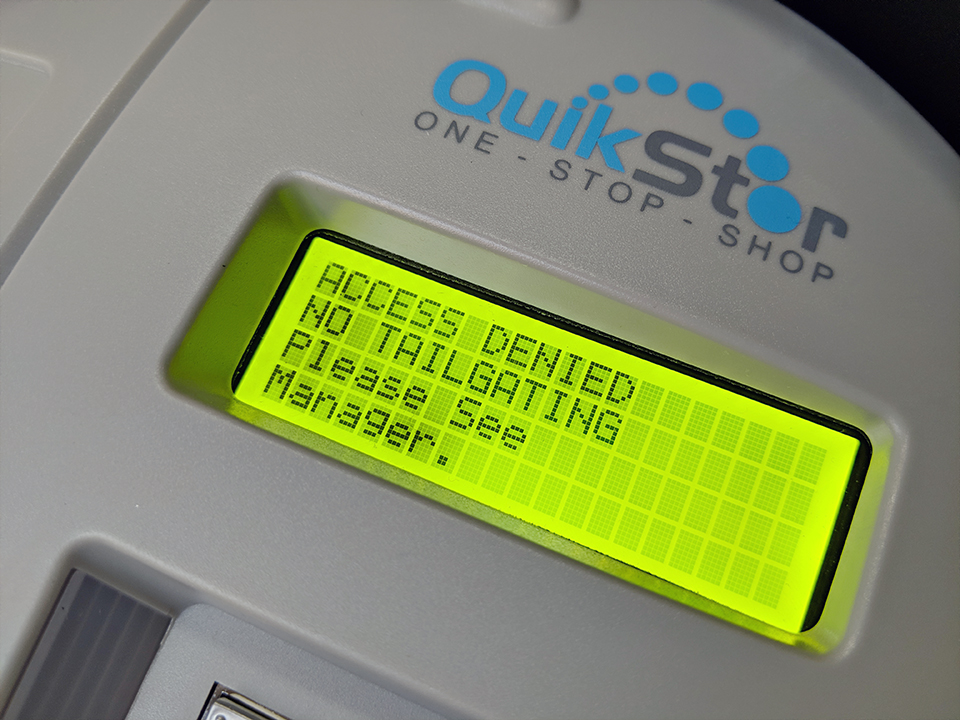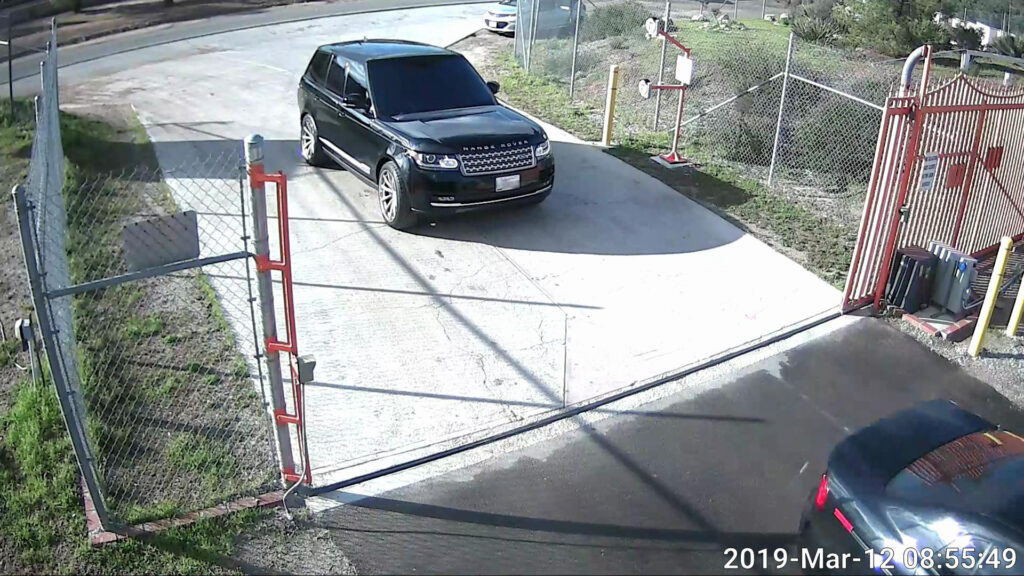




In the storage industry, when we talk about tailgating, we are not talking about a group of people gathered around their vehicles cooking hot dogs and drinking beer. Quite the contrary. In self-storage, tailgating indicates a breach in security. How severe the breach varies from situation to situation.
What is tailgating?
Tailgating is when a vehicle enters a self-storage facility by following another vehicle and without entering their own keycode. Picture two cars at a storage facility gate, the first car enters their code, the gate opens and both cars proceed through the gate. This is a classic example of tailgating.
Why does tailgating happen?
The two main reasons tailgating happens at storage facilities is a) because the tenant forgets or decides not to enter their valid keycode and 2) the person in the second car is not a tenant or is a tenant who knows they are past their grace period or outside of their normal office hours.
Storage facility owners can better secure their facilities by knowing more about the capabilities of their access control keypads and various settings available to them.

Self Storage Access Control Keypads
Self-storage facility security often begins with access control keypads. Self-storage keypads aren’t your typical commercial keypads. They are designed to communicate with self-storage management software.
Keypads are updated by the self-storage management software routinely, often in real time. Every paid to the date change, move-in, move-out, delinquency action etc can change whether or not a tenant has access. In addition, tenants hours have the option to be regulated. Interestingly, non-tenants like gardeners, maintenance workers, and storage facility employees get their own set of rules.
For a storage facility, the management software and access control keypads work hand in hand to assist with facility security.
Types of Access Control Configurations for Storage Facilities
For a facility with a single entrance and a single exit point, there are two types of popular configurations:
Keypad at Entrance, Exit Loop at Exit
With this configuration, the storage facility owner has already made the decision to invest in a perimeter fence and gate for the facility. The entrance keypad is programmed to only allow tenants to access the facility. Delinquent tenants are denied access until they pay their bill and individuals without a code have to talk to the manager before driving in.
Once inside the facility, any vehicle may use the exit gate which has been installed with a sensor to open for any approaching vehicle. This type of setup is typically referred to as an “exit loop”. Anybody who gets it can get out.
Keypad at Entrance and Exit
With this setup, a keypad controls the entrance and the exit. Tenants code in to open the entrance gate and have to use their code to open the exit gate.
Sometimes that’s the same gate, in which case there is a keypad on either side. At some storage facilities, there may be a separate entrance and exit gate. Whichever the case, only tenants with valid codes can exit.
This setup adds an extra layer of security. If a would-be thief or other unauthorized person follows another tenant into the facility, tailgates, they won’t be able to get out unless they follow somebody out as well. They won’t have valid code and so the keypad will deny them exit.

Controlling Exit with Self Storage Keypads
No Tail Lock
No tail lock is the least secure method of exit. This allows any person with a valid keycode to exit. All tenants, whether current or delinquent, will be granted exit if they have been able to enter the facility.
This essentially means that if a tenant in lien sale has tailgated onto the property, cut the lock and emptied their unit, the keypad will allow them to exit.
Tail lock During Master Gate Hours
With this setting, a tenant’s exit is denied during office hours only. This requires the tenant to either use the intercom feature on the keypad to call the office to be let out or, to go into the office to talk to the manager.
In both situations, the manager has been provided with an educational opportunity. She can take the time to remind the tenant why the facility has security keypads and that they always need to key in at the entrance, even if the gate is already open.
Tail-lock 24/7
With 24/7 tail-lock, it doesn’t matter what time the tenant enters, if they tailgated, they will not be allowed out. This is the most secure setting for a storage facility. It ensures that anyone who does not enter a code will not be able to get out, no matter what time it is.
Pros and Cons of Tail-Locking Storage Facility Tenants
The main purpose of tail-lock is to ensure that storage facilities don’t lose money from delinquent tenants bypassing the entrance keypad, opening and clearing out their units.
Tail-locking also reduces the chance that unauthorized individuals will enter the facility. If they do, tail lock settings can keep them in until their purpose has been determined.
The caveat to this setting is that a tenant who is locked in may resort to calling the police or even removing the gate from the tracks to be let out. This is especially true when the tail lock 24/7 setting is enabled.
After hours is usually when someone would try to do something they shouldn’t on site.
Should You Use Tail-Lock at Your Facility?
The decision to use or not to use tail-lock at each individual facility is a personal one. Facility owners should consider a few factors like:
- How often is a delinquent tenant able to clear out their unit?
- How often do you have unauthorized individuals at your facility?
- In the event that someone can’t get out, is there an after-hours emergency number at the exit gate?
Here are some factors to consider. If you are still on the fence, try using the tail lock setting during office hours for a couple of weeks. Once you have had a few weeks to try it, you can make a better decision about how it may or may not help your facility.
You can find knowledge base articles for the tail lock setting in our free knowledge base at support.quikstor.com.